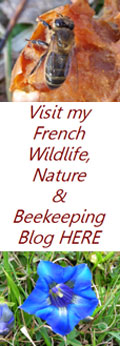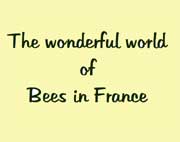Hornet or Frelon in France
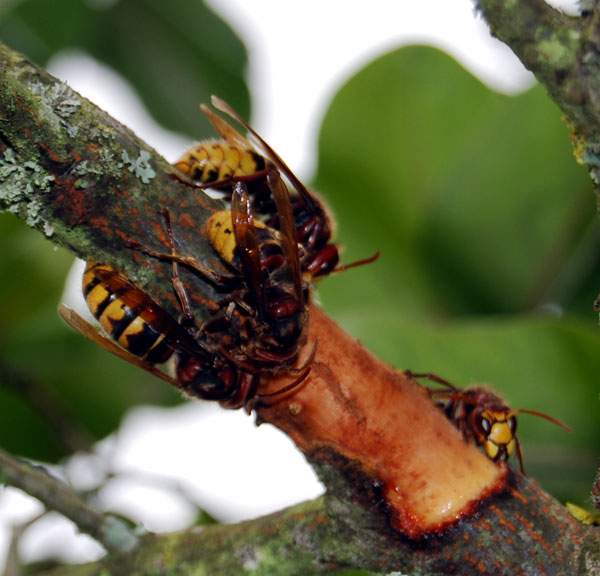

Hornet - Vespa crabro – Frelon or Guêpe frelon or Guichard
This is the largest European “wasp”. Queens can be up to 3.5 centimetres long and are often more boldly marked, workers and males are between 1.8 and 2.5 centimetres long.
They are essentially a predator of a large variety of other insects, including bees and other wasps to feed their larvae with small regurgitated pellets. It's later in the year that we see more of them as they increasingly eat ripe fruit, apples, pears, grapes, in fact anything with high sugar content. They do not pose a greater threat to Honey bee colonies than any other native social wasp and will only be a serious concern to a honeybee colony that is already extremely weak or failing. This should be self evident as they have lived alongside each other for many thousands of years.
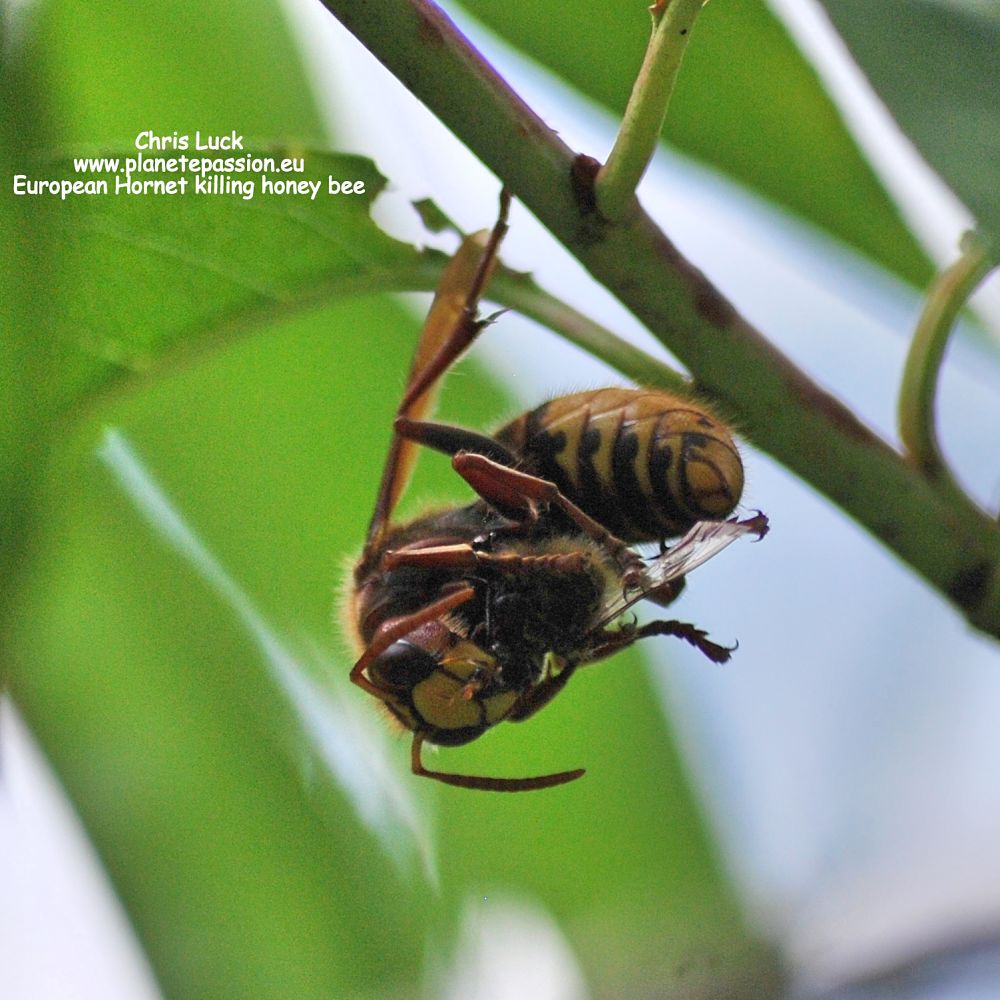
Photo above shows a Honey bee being killed and dismembered by a Hornet
Perhaps surprisingly they are also food for a number of species that have learnt how to deal with their sting, the Bee eater grasps them by the body and bangs them on a branch, the giant house spider dances round them wrapping them up in its web and the house centipede plunges its venom fangs into them.
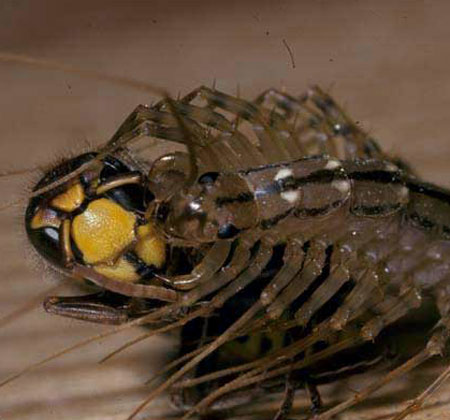
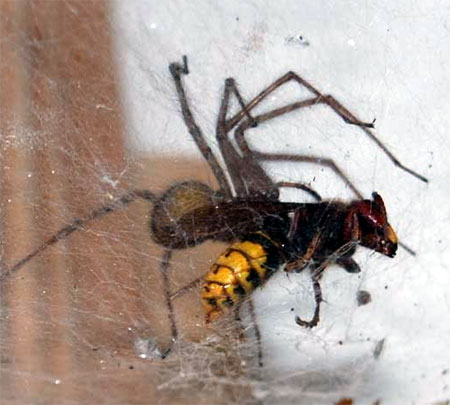
Photos above. Hornets falling victim to House centipede and Giant house spider.
The initial nest, which is constructed using bark from trees mixed with saliva, is started by fertilised queens that have over wintered. This can take place from about the middle of April. She lays an egg in each cell as it is completed, then after she has raised the first workers they continue with the process of enlarging the nest and feeding the larvae. The nests are normally constructed in hollows in trees, cavities in stone walls or something of a similar nature, bird nesting boxes are sometimes used and I sometimes find they will use an empty bee hive. An old nest is never used twice although the same site may be used if the old nest is removed.
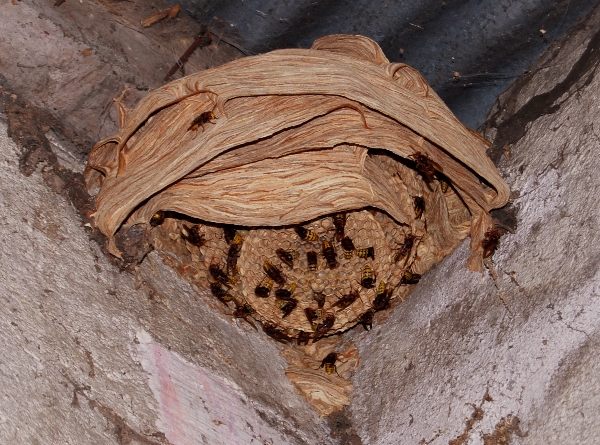
Photo above: Hornets nest

Photo above. Hornets gathering nesting material
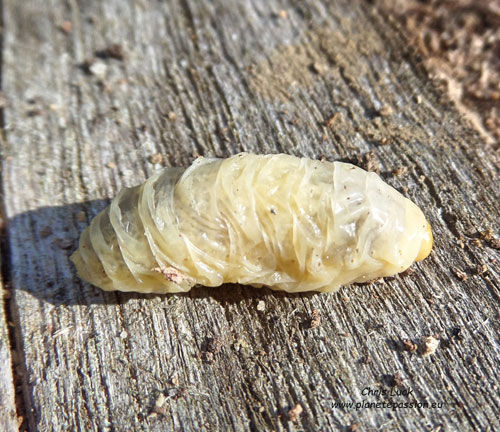
Photo above: Housekeeping hornets remove diseased or dead larvae and pupa from nest
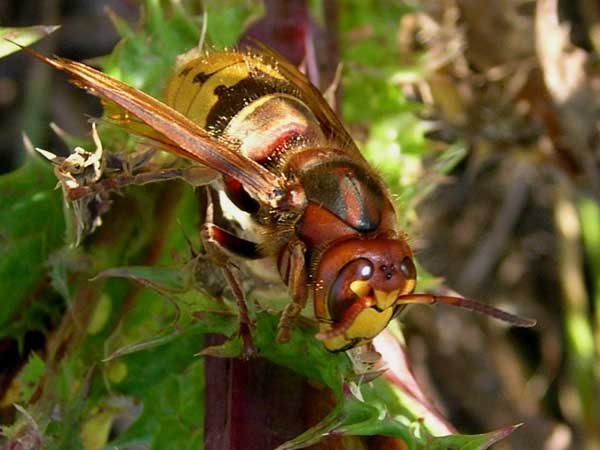
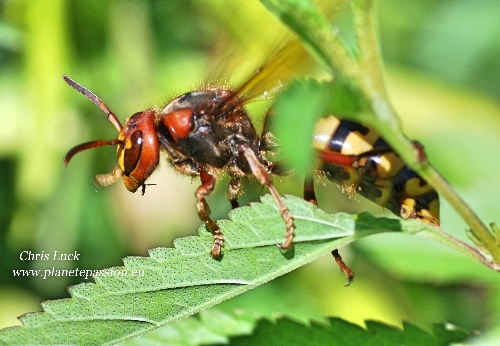
Photos above. Queen Hornets
Hornets will “work” up to 1.5 kilometres from the nest and although a colony can have up to 300 individuals it is normally far fewer than this number. Their main period of activity is during daylight but night flying can take place and they are frequently attracted to lights.
As is the case with all social wasps, (Vespidea), the entire active colony disappears in late autumn or early winter. The existing queen, the males and workers all die leaving only the newly fertilised Queens to disperse and live through the winter in a sheltered place to form the new colonies the following spring. As with other social Wasps and Bumblebees that share this behavioral charecteristic very few actually successfully create viable colonies the following year.
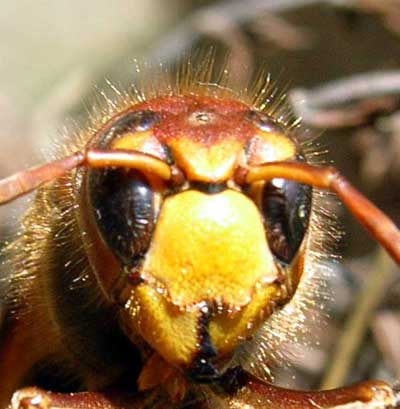
Photo. Hornets head.
Many people assume or are led to believe that Hornets are dangerous and there are always people ready to tell you that they will attack without provocation, that 3 stings and your dead and other such tales. These have no foundation what so ever, their venom being no more dangerous than any other native social wasp. Left alone to go about their business they will take no interest in humans other than “looking” at you, this “looking “ will often involve flying around you moving backwards and forwards towards you in just the same way as they “look” at any other object, this is nothing to be concerned about, in fact any flapping about is only going to agitate them. One thing that should be mentioned is that the use of some body products, perfumes, aftershaves, deodorants and the like can potentially anger them as it does with wasps and honey bees.
There are of course situations in which they, either singly or collectively, will attack and sting, this is (logically) when they feel that either they or their nest are under threat, so you should never flap your arms or anything else around at them or crash around by a nest. Of course if you sit or put your hand on one it’s likely to sting.
To conclude, you are only really at risk if you are a person that reacts badly to stings or if you should receive multiple stings, which is the same as it would be with any other wasp or bee.
It is probable that the greater availability and use of modern insecticides is having an effect on overall population levels and where possible the nests should be left alone. In some European countries such as Germany and Austria they are a protected species.


